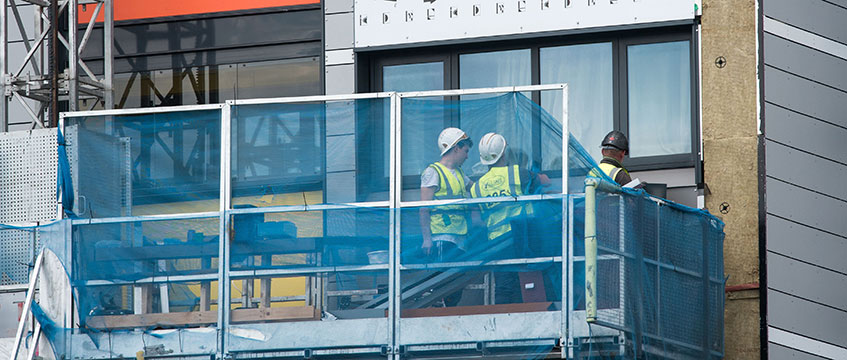On 18 July 2019, the Ministry of Housing, Communities and Local Government (MHCLG) published full fund application guidance in respect of the Private Sector ACM Cladding Remediation Fund (the Fund), which aims to help pay for the removal and replacement of unsafe aluminium composite material (ACM) cladding.
Annex A to the guidance summarises the information required in support of applications for funding, and explains that the information required will be set out comprehensively via the application portal.
On 12 August, MHCLG published a further three documents concerned with the Fund, each dealing with State Aid – summarised in the guidance as any advantage granted by public authorities through state resources on a selective basis to any undertaking (ie any entity engaged in an economic activity) that could potentially distort competition in the EU.
Applying for funding
The key to understanding and making an application for funding in accordance with the guidance is the role played by the person to whom it refers as the “responsible entity”.
The guidance states that applications for funding can only be made by the responsible entity and, as a condition of funding, the entity will enter a funding agreement on terms acceptable to MHCLG.
The guidance does not offer a definition of responsible entity, but says it may be: the building freeholder; the head leaseholder; or a management company which has primary responsibility for the repair of the building. In the case of a management company that is not the entity, the guidance states such a person will still be able to apply and manage the application as an agent for it.
Key issues
There are some practical questions arising from the guidance. Where the parties to a lease are currently in dispute about the liability to pay for the cost of replacement cladding and other fire safety measures, including interim measures, how will that dispute be affected? And where a relevant court application or an application to the First-tier Tribunal (FTT) is presently under serious consideration, how will the guidance affect the decision on whether to commence proceedings?
Each case is different and highly fact-sensitive. It is possible only to consider these issues at a general level. Nevertheless, the concerns of landlords, tenants and management companies involved in, or contemplating, litigation are real.
Consider, for example, hypothetical proceedings that are currently under way in which one of the parties to a lease has asked for a declaration or determination that certain covenants in a lease allow or do not allow a landlord to recover the cost of: replacement cladding; interim safety measures, including carrying out a waking watch until the cladding is removed; other fire safety measures, including the introduction of a new alarm system; and other major works unrelated to fire safety but sensibly carried out at the same time in order to achieve significant cost savings. Consider also the same hypothetical facts, but where proceedings have not yet been but are about to be issued.
Impact on litigation
The guidance includes provisions that would undoubtedly affect the proceedings or proposed proceedings in a number of ways. The following examples are not exhaustive. They do, however, illustrate the complex legal issues arising from an application for funding.
MHCLG expects building owners actively to identify and pursue all reasonable claims against those involved in the original cladding installations. To date, this might not have been an integral part of the strategy contemplated by the landlord or management company, and perhaps for very good legal or commercial reasons. What might have seemed an entirely reasonable legal and commercial decision to a landlord or management company might not be considered reasonable to the MHCLG. The strategy might now have to be reconsidered.
The Fund will not be available for costs that would not otherwise be recovered from residential leaseholders through the service charge provisions in their leases. Some leases allow the cost of replacement cladding to be passed through the service charge; others do not. Should a landlord or management company litigate this issue in order to satisfy the funding requirement? Should tenants concede the issue so as to facilitate the application for funding? Will MHCLG’s lawyers intervene to decide? Where the proceedings are on foot or about to be commenced, should the question of liability under the lease be determined as a preliminary issue so as to resolve this question as soon as possible? Will the court or FTT be amenable to such an application?
The Fund will provide a grant to cover the reasonable cost of eligible items only. Eligible items include works directly relevant to the replacement of unsafe ACM cladding systems and directly related management fees. They do not include other necessary fire safety works unrelated to an unsafe ACM cladding system or operational running costs. Where proceedings are under way that include a determination as to the reasonableness of the cost of replacement cladding, should those proceedings be continued or expedited so as to assist the grant application?
The guidance states that reasonable costs will be informed by an industry-standard approach to specification and procurement of works having regard to benchmarks established from comparable projects. Higher than expected costs will be challenged and be subject to scrutiny. As a result, the level of grant may be reduced. The test of reasonableness employed under the guidance appears to be the same or similar to that imposed by section 19 of the Landlord and Tenant Act 1985.
Does that mean the litigation ought to run its course with the intention that MHCLG will be persuaded the costs are fair? Or will the proceedings put the application for funding at risk? Again, the deadline of 31 December 2019 becomes a salient consideration, because a request to grant an extension of time will only be treated favourably by the application board where there are exceptional mitigating circumstances.
Robert Bowker is a barrister at Tanfield Chambers








